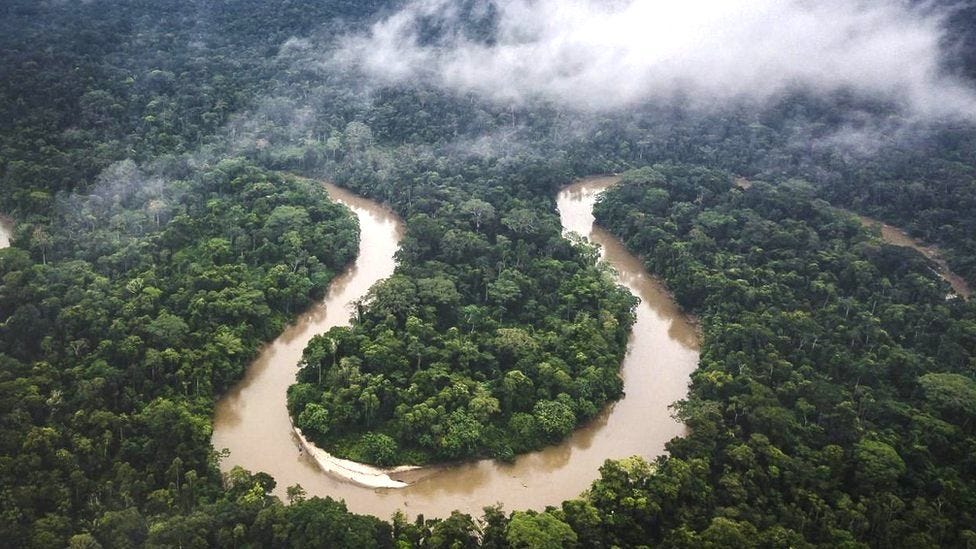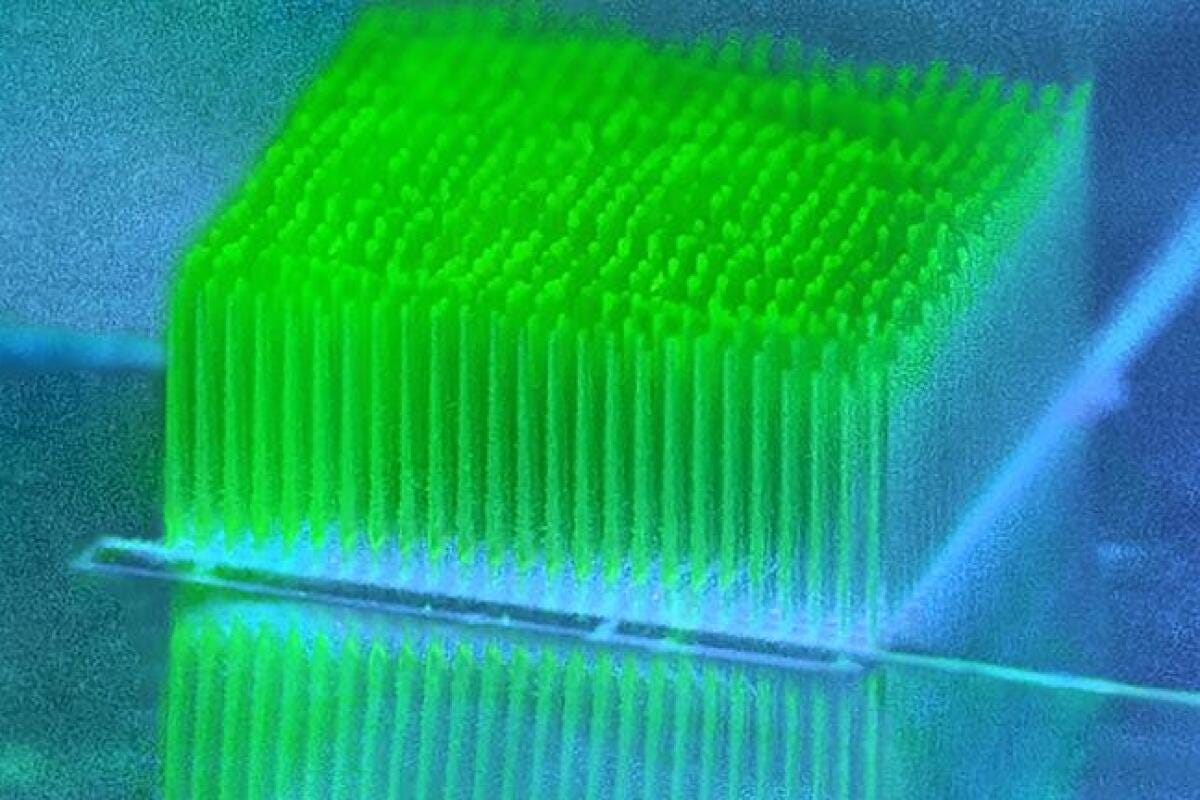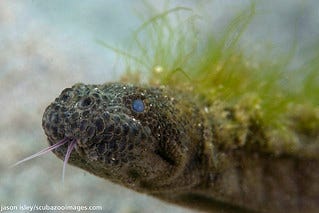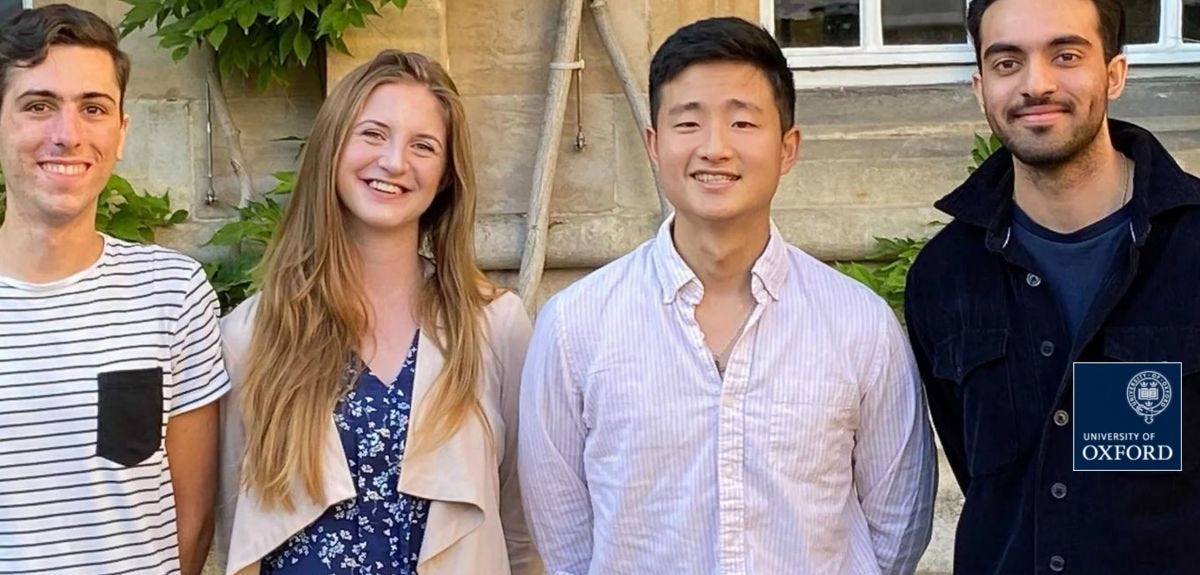AI for algae-fuel? The Paxtier Report 09/03/22
Plus nano-housing for microalgae, David Kim from CyanoCapture, and updates in artificial photocatalysis research
“Opportunity is missed by most people because it is dressed in overalls and looks like work.” — Thomas Edison
Hello and welcome to Paxtier’s weekly roundup for Wednesday, March 9, 2022! This week we bring you trends in seaweed searches, a fireside chat with David Kim from CyanoCapture, and research exploring how to extract bioactive compounds from macroalgae.
Markets
Wow, what a week!
While the S&P 500 suffered its worst day since October 2020 and the Nasdaq dipped into a bear market, climate teams tried their best to stay positive. On the investment front, things didn’t look too bad as Aurora Solar raised $200m, Biomason raised $65m and Better Dairy raised $22m, but could this be the end of a solid run? Some investors certainly think so. A warning was issued to private markets this week as start-up valuations stalled following the effects of inflation, war, and potential interest rate hikes.
Meanwhile, climate fintech start-ups turned a few heads in the last 7 days, and algae-tech surged as new research papers covered fascinating topics including artificial photocatalysis, biochar, and tofu/seaweed-based biogas. This uptick is particularly encouraging when coupled with the growing global demand for algae news in recent times (Figure 1):

What’s been happening in the world?
Amazon Rainforest Nears Climate 'Tipping Point' Faster Than Expected: Hammered by climate change and relentless deforestation, the Amazon rainforest is losing its capacity to recover and could irretrievably transition into savannah, with dire consequences for the region and the world, according to a study published Monday. Researchers warned that the findings mean the Amazon could be approaching a so-called tipping point faster than previously understood.
How badly will Russia's war torpedo hopes for global climate: Oleg Anisimov, Russia’s U.N. climate delegate states “Let me present an apology on behalf of all Russians who were not able to prevent this conflict,” before the IPCC’s release of its latest report. According to one delegate, Anisimov stated that climate change and the war on Ukraine “have the same roots: fossil fuels, and our dependence on them.”
Army Scientists Seek Capability against Waterborne Toxins : “Our Soldiers are deployed to about 150 countries around the world, and many of these areas will experience harmful algae blooms. “We need to know the potential toxins in any given area, how to detect them, and how to protect our Soldiers from potential exposure.”
Wind turbines can breathe new life into our warming seas: “The introduction of wind turbines into deeper water, where the ocean is stratified, will provide a new, artificial source of turbulence. Water flowing past the floating turbine foundations will generate wakes, causing the warm and cold layers to mix together. This increased turbulence could potentially offset the impacts of climate change on stratification and increase the supply of nutrients to the surface layer and oxygen to the deep water.
Core aspects of climate models are sound — the proof's in the plankton : These researchers used a combination of fossils from a single-celled organism called foraminifera to create a continuous, 95-million-year record of latitudinal temperature gradient LTGs. “The chemistry of plankton shells tells you so much. Their shells carry an imprint of the seawater conditions at the time they were formed.”
"Tiny skyscraper" electrodes boost bioenergy output of blue-green algae: Scientists have long studied the abilities of photosynthetic bacteria that turn sunlight, carbon dioxide and water into energy, and by giving these communities a home likened to a high-rise apartment block, a team has broken new ground in this space. These tiny grids of "nano-housing" create the optimal environment to not just foster the rapid growth of these bacteria, but take their energy-harvesting potential to new heights.
Artificial intelligence predicts algae potential as alternative energy source: Scientists are using artificial intelligence to set a new world record for producing algae as a reliable, economic source for biofuel that can be used as an alternative fuel source for jet aircraft and other transportation needs. “The commercialization of algal biofuel has been hindered by the relatively low yield and high harvesting cost. The limited light penetration and poor cultivation dynamics both contributed to the low yield. Overcoming these challenges could enable viable algal biofuels to reduce carbon emissions, mitigate climate change, alleviate petroleum dependency and transform the bioeconomy.”
Tweets of the week
A review by Yang et al. investigated recent advances in artificial Photocatalysts inspired from biology and algae: Artificial photocatalysis systems carry out CO2 reduction and water splitting to obtain green renewable energy or oxygen. This paper reviews how nature can inspire the design of such systems, and discusses how organisms such as algae have contributed to this area of research.
Current status and trends in extraction of bioactives from brown macroalgae using supercritical CO2 and subcritical waters: Bioactive compounds from brown seaweeds, such as polysaccharides, phenolics and pigments, have shown a range of health-promoting properties that can be implemented into products like functional foods, cosmetics, and medicine. Extraction is therefore crucial in recovering these bioactive compounds, but conventional methods today need to be more sustainable and efficient. In this review, the extraction of brown seaweeds using supercritical carbon dioxide (SCCO2) and subcritical water (SCW) is discussed comprehensively.
Quantifying habitat provisioning at macroalgal cultivation sites: This review evaluates techniques used to quantify habitat provisioning in and around macroalgal cultivation sites, for species ranging from microorganisms to megafauna, and outlines recommendations to enable a more comprehensive ecological valuation of macroalgal cultivation in the future.
Removing pollutants using seaweed biochar: Heavy metal pollution poses serious environmental risk and has received added attention in the past, globally. This study demonstrates the utilization of seaweed-derived magnetic biochar composite as an efficient sorbent and low-cost alternative for the removal of Cr(VI) from the environment.
Biogas production can be increased by co-digesting seaweed with tofu: This study aimed to investigate the co-digestion of wild seaweed G. verrucosa (WGv) with Tofu and its impacts on biogas and methane production.
In depth with Peter Green
CyanoCapture: David Kim
This week, we sat down with the fantastic David Kim from CyanoCapture, a team using genetically modified (GM) cyanobacteria to drawdown CO2. In this edited conversation, David discusses his inspiration for creating CyanoCapture, his perspectives on the microalgal industry, and the team's innovative technology.
How has CyanoCapture evolved to where it is now?
I had the idea while studying respiratory systems in the human body. After noticing cyanobacteria performing a somewhat similar CO2 exchange process, I started to visualise the planet as one big body fitted with lungs and CO2 emission sites. I then sought to create solutions to mitigate CO2 at these emission sites, and cyanobacteria stood out as the best organism for the job.
I founded a team in January 2021 after pitching the idea at a biotech hackathon. Our plan from the start was to use the best GM technology we have at the University of Oxford, and apply it to the best known strain of cyanobacteria. We got funding for this in June 2021 before going on to win the student X PRIZE carbon award in November. We've been using that money to produce and patent our own commercial GM strain which now shows a 3x improvement in its ability to capture CO2.
Could you expand a little on your innovative photobioreactor (PBR) work?
We are using our own proprietary photobioreactor design which resembles a flat panel system crossed with a raceway pond. As flue gases are pumped directly into our PBRs from industry facilities, the photobioreactors are heated to the optimum temperature using a clever negative feedback mechanism. What's more, we also use a scalable modular design, which we believe will help us meet the needs of our customers.
What's your opinion on the microalgal space and where do you see the industry going in the next 5-10 years?
We haven't heard much from this space since the microalgal market crashed 10 years ago. Despite this, I think we'll see a resurgence thanks to the market price for carbon tripling in 2020/2021. This suddenly meant that carbon fixation technologies like microalgae cultivation became profitable.
It will be interesting to note which strain of microalgae will be most popular going forward. In the past, people primarily worked with spirulina to create products like nutraceuticals, pigments, dyes, and health foods. These were the top tier, high market products. Nowadays, companies trying to capture maximum carbon like CyanoCapture will likely turn to other strains like Synechococcus. I think this will lead to a divergence in the market over the next five years.
Are your team considering the production of alternative bioproducts with your biomass?
Absolutely. We are currently looking to enter B2B partnerships for this purpose. In the last few years, plenty of companies have emerged with the capability to permanently store biomass as concrete, cement, and other building materials. We would like to partner with such teams and supply them with our biomass and free fatty acids.
What challenges have you encountered in your role so far, and what challenges remain for CyanoCapture?
It can be a challenge to explain how direct carbon capture (our competitor) is a non-viable technology due to its high energy costs. All the energy involved in heating their absorbent, compressing pressurised CO2, and transporting the product over vast distances is very intensive. As a result, it's barely a net negative process.
In comparison, microalgae cultivation is significantly less intensive. This means it's better for the environment, and the operational costs are almost tenfold lower than direct air capture. Despite these clear benefits, the challenge lies in the fact we haven't proven our technology at scale. As a result, it requires a little more effort at this point to persuade people to believe in algae-based carbon solutions again, but we'll get there!
What's next for CyanoCapture?
We have a few things in the pipeline. Firstly, we've already proven enough in the lab to start scaling out a pilot project. Therefore, we aim to do a 500 - 1000 t/yr CO2 capture installation in 2023. That's going to demonstrate to the world that our technology genuinely works. Alongside this, we are continuously improving our strain and photobioreactor design to optimise performance.
What advice or resources might you give to people who are just starting out on their journey with sustainability focussed businesses or investments?
In terms of advice, it's important to never lose sight of the mission. To get through those tough days and obstacles, taking note of that overall mission will often guide you through. At CyanoCapture, the mission is clear. This start-up could potentially change the course of the century and, in my opinion, there's nothing better to do for the world right now than help industries decarbonize.
When it comes to resources, I love this book called "Factfulness" by Hans Rosling. It may have nothing to do with climate change or business, but it's about keeping a rational perspective on matters. In addition, it has also made me more optimistic about the future. The key message is that the world is much better than you think, and there is cause to believe humanity is making progress in the right direction.
Events:
10th European Algae Industry Summit
Jobs:
Marine Licenses and Surveys Manager - Green Ocean Farming, Plymouth UK
Researcher in Algal Biotechnology - University of Greenwich, London UK
Research Assistant - SuSeWi, London UK
Algae Strain Engineer - PhycoWorks, London UK
Deandra Dottin goes airborne:

Real cruise past PSG:
Thanks again for joining us this week! Looking forward to seeing you soon.
Best,
Peter
Paxtier




















